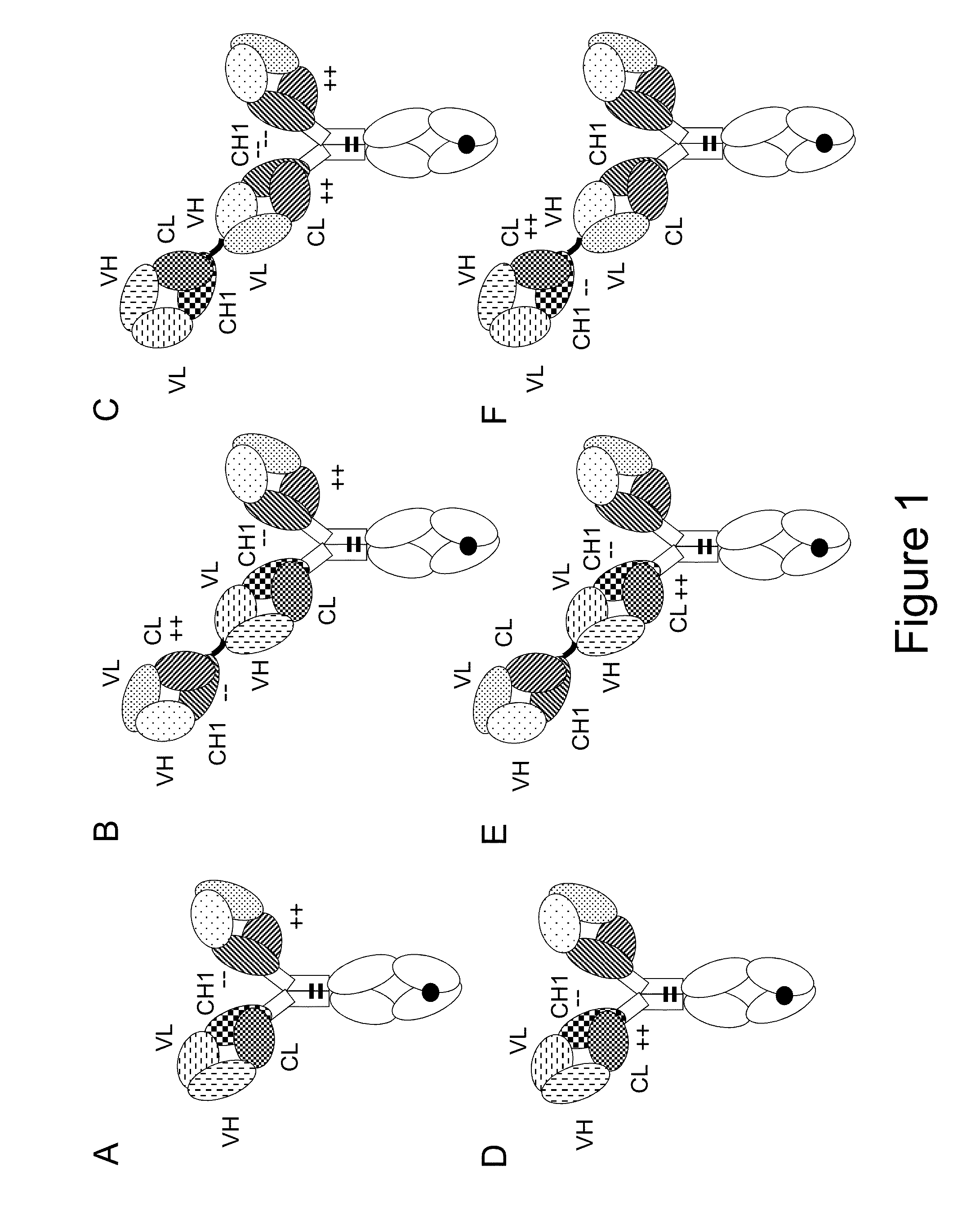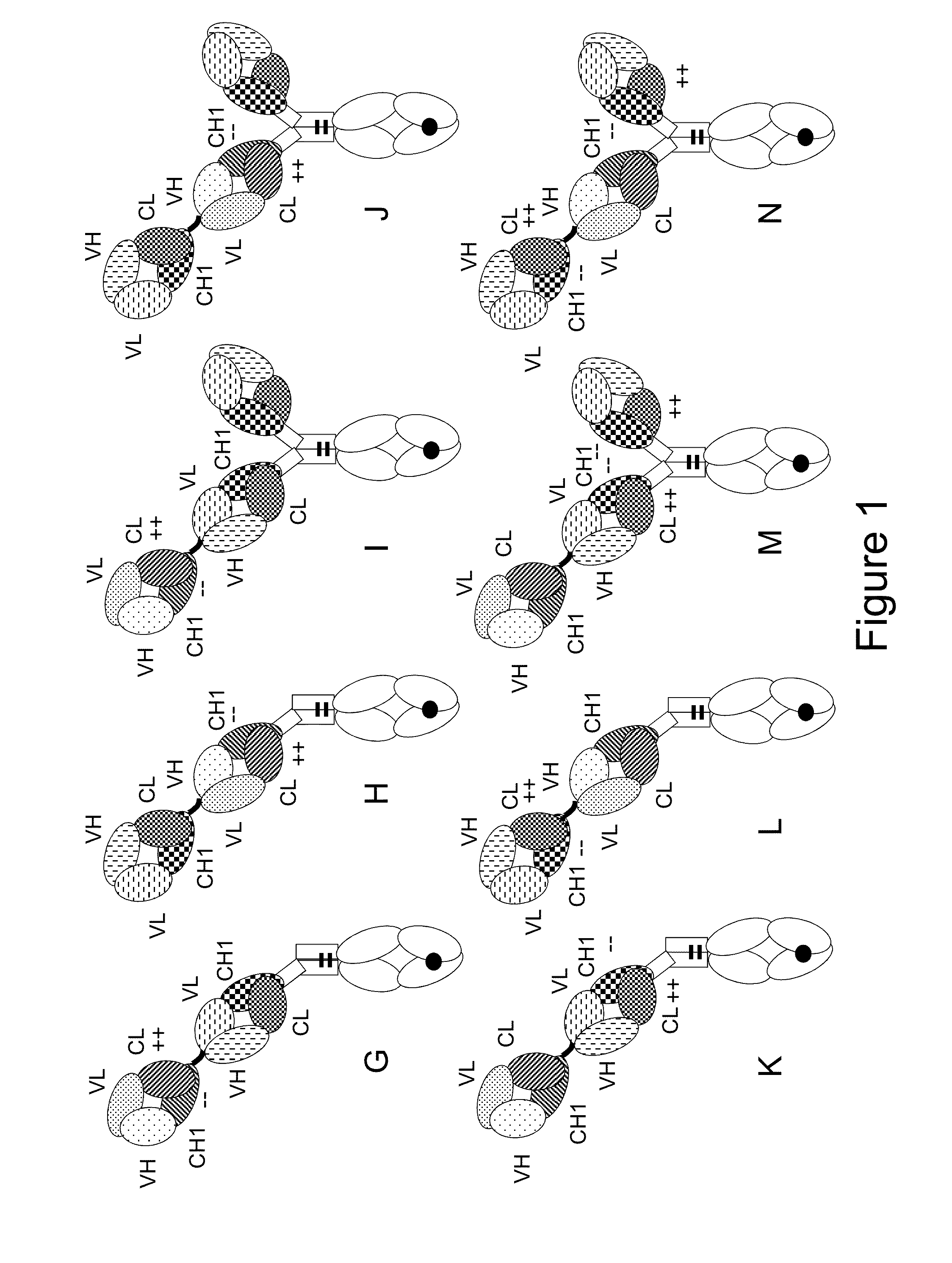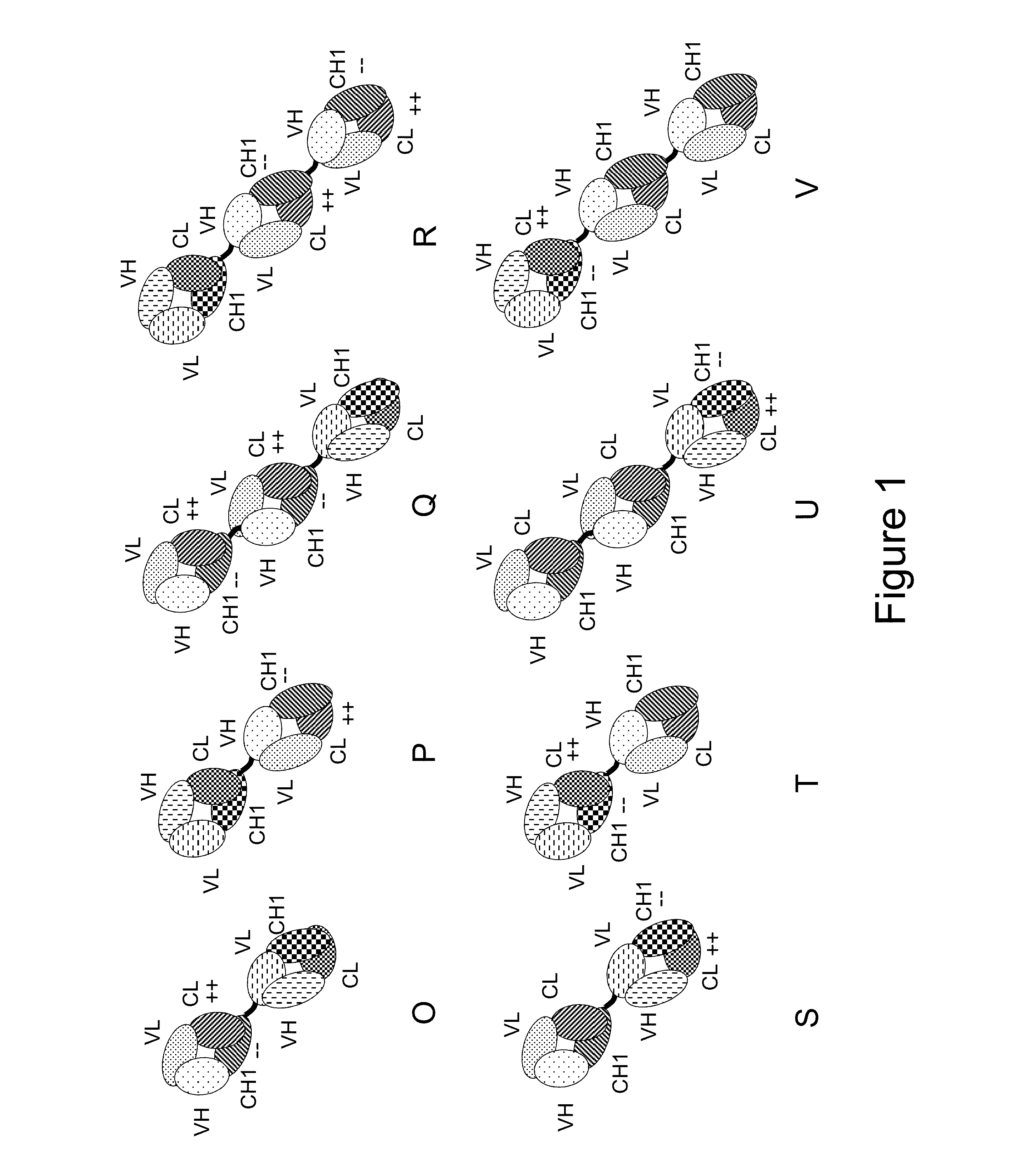Bispecific t cell activating antigen binding molecules
a technology of binding molecules and t cells, applied in the direction of fused cells, antibody medical ingredients, drug compositions, etc., can solve the problems of igg-like formats, unable to activate the effector mechanism mediated by the fc domain, and suffer from the toxicity of the native effector functions inherent in igg molecules,
- Summary
- Abstract
- Description
- Claims
- Application Information
AI Technical Summary
Benefits of technology
Problems solved by technology
Method used
Image
Examples
example 1
Preparation of T-Cell Bispecific (TCB) Antibodies with and without Charge Modifications (Anti-CD20 / Anti-CD3)
[0317]The following molecules were prepared in this example, schematic illustrations thereof are shown in FIGS. 2A-K:[0318]A. “2+1 IgG CrossFab, inverted” without charge modifications (CH1 / CL exchange in CD3 binder) (FIG. 2A, SEQ ID NOs 14-17)[0319]B. “2+1 IgG CrossFab, inverted” with charge modifications (VH / VL exchange in CD3 binder, charge modification in CD20 binders) (FIG. 2B, SEQ ID NOs 18-21)[0320]C. “2+1 IgG CrossFab” with charge modifications (VH / VL exchange in CD3 binder, charge modification in CD20 binders) (FIG. 2C, SEQ ID NOs 32, 19-21)[0321]D. “2+1 IgG CrossFab, inverted” without charge modifications (VH / VL exchange in CD3 binder) (FIG. 2D, SEQ ID NOs 33, 15, 17, 21)[0322]E. “2+1 IgG CrossFab, inverted” without charge modifications (VH-CH1 / VL-CL exchange in CD3 binder) (FIG. 2E, SEQ ID NOs 34, 15, 17, 35)[0323]F. “2+1 IgG CrossFab, inverted” with charge modificat...
example 2
Preparation of “2+1 IgG CrossFab, Inverted” T-Cell Bispecific Antibody with and without Charge Modifications (Anti-BCMA / Anti-CD3)
[0383]Schematic illustrations of the molecules prepared in this example are shown in FIGS. 22A-B. The anti-BCMA / anti-CD3 “2+1 IgG CrossFab, inverted” molecule without charge modifications (referred to in this example as “83A10-TCB”) comprises the amino acid sequences of SEQ ID NOs 22-25, the anti-BCMA / anti-CD3 “2+1 IgG CrossFab, inverted” molecule with charge modifications (referred to in this example as “83A10-TCBcv”) comprises the amino acid sequences of SEQ ID NOs 26-29.
[0384]For the generation of BCMAxCD3 bispecific antibody vectors, the IgG1 derived bispecific molecules consist at least of two antigen binding moieties capable of binding specifically to two distinct antigenic determinants CD3 and BCMA. The antigen binding moieties are Fab fragments composed of a heavy and a light chain, each comprising a variable and a constant region. At least one of ...
example 3
Preparation of “2+1 IgG CrossFab, Inverted” T-Cell Bispecific Antibody with Charge Modifications (Anti-Her2 / Anti-CD3) and “2+1 IgG CrossFab” T-Cell Bispecific Antibody with Charge Modifications (Anti-Her3 / Anti-CD3)
[0397]A schematic illustration of the molecules prepared in this example is shown in FIGS. 27A-B. The anti-Her2 / anti-CD3 “2+1 IgG CrossFab, inverted” molecule with charge modifications (referred to in this example as “Her2 TCB”) comprises the amino acid sequences of SEQ ID NOs 21, 52, 53 and 54. The anti-Her3 / anti-CD3 “2+1 IgG CrossFab” molecule with charge modifications (referred to in this example as “Her3 TCB”) comprises the amino acid sequences of SEQ ID NOs 21, 55, 56 and 57.
[0398]The molecules were prepared, purified and analyzed as described in Example 1 above (with a single preparative SEC step).
[0399]Both molecules could be purified with high final quality shown by analytical size exclusion chromatography and CE-SDS (Table 16, 17). Although recovery of the Her2 TC...
PUM
| Property | Measurement | Unit |
|---|---|---|
| Fraction | aaaaa | aaaaa |
| Fraction | aaaaa | aaaaa |
| Fraction | aaaaa | aaaaa |
Abstract
Description
Claims
Application Information
 Login to View More
Login to View More - R&D
- Intellectual Property
- Life Sciences
- Materials
- Tech Scout
- Unparalleled Data Quality
- Higher Quality Content
- 60% Fewer Hallucinations
Browse by: Latest US Patents, China's latest patents, Technical Efficacy Thesaurus, Application Domain, Technology Topic, Popular Technical Reports.
© 2025 PatSnap. All rights reserved.Legal|Privacy policy|Modern Slavery Act Transparency Statement|Sitemap|About US| Contact US: help@patsnap.com



